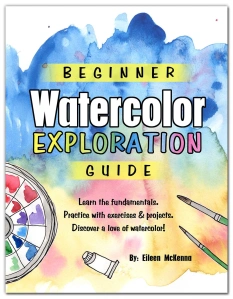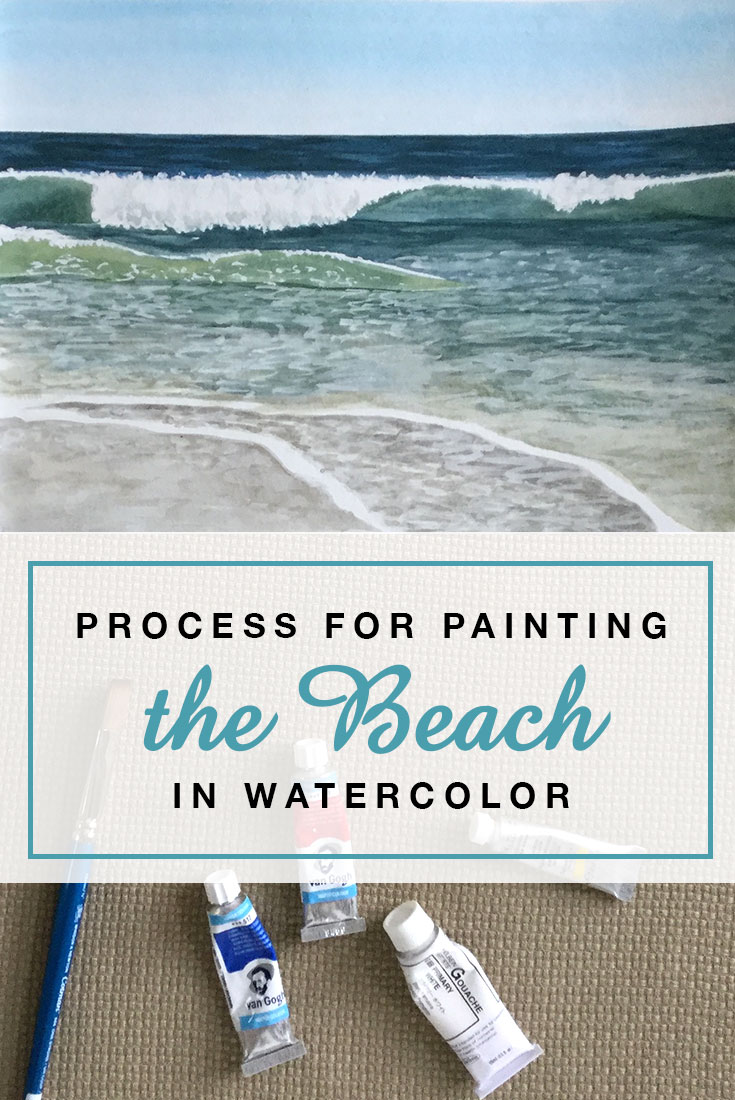There is a real benefit to painting the same subject over and over. You get better at it, and after trying different things, over time you develop a process. You develop a series a steps that you follow every time you paint.

Process for painting watercolor seascapes
Here is a summary of my process. Keep reading for links to more in depth resources.
- Mix seascape colors – I mix blues, greens, and browns from ultramarine blue, cadmium yellow, and cadmium red.
- Mark the horizon line. I use painter’s tape to achieve a straight horizon line.
- Paint the ocean water closest to the horizon darker and bluer.
- Paint the water in the cresting wave lighter and greener.
- Paint the shallow water near shore brown.
- Paint the sand. The sand is darkest closer to the ocean where it is wetter.
- Paint the crashing waves with white gouache.
- Paint the foam with white gouache and a flat brush. Horizontal lines help this area appear flat.
- Add shadows to the breaking wave.
- Paint the sky as a blue fade that is lighter closest to horizon.

Learn more about painting watercolor seascapes:
I share my step by step process for painting watercolor seascapes in the following tutorials. Choose the format that works best for you:
- Printable tutorial – step by step with photos of each stage of the process
- Video lesson – 34 minute video lesson
- Live Zoom lessons – coming soon! Check here for updates.

For a steady stream of watercolor tips and tricks…
Sign up for my weekly newsletter here.
Related post:
Read “Tips on Painting Waves in Watercolor”
Ready to get started in Watercolor?
The Beginner Watercolor Exploration Guide is for you! And it includes the Watercolor Seascape Painting Tutorial!

- Learn the fundamentals.
- Practice with exercises & projects.
- Discover a love of watercolor!
This post contains affiliate links to products I use and recommend. I earn a small commission whenever you buy using these links, at no additional cost to you. Thank you for supporting my blog!






